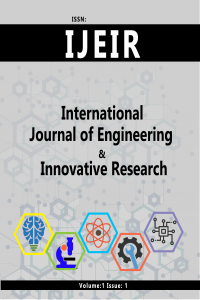REGRESSION BASED RISK ANALYSIS IN LIFE INSURANCE INDUSTRY
REGRESSION BASED RISK ANALYSIS IN LIFE INSURANCE INDUSTRY
life insurance, predictive analytics, insurance analytics, regression-based risk analysis,
___
- [1] Burri, R. D., Burri, R., Bojja, R. R., & Buruga, S. (2019). Insurance Claim Analysis using Machine Learning Algorithms. International Journal of Advanced Science and Technology, 127(1), 147-155.
- [2] Boodhun, N., & Jayabalan, M. (2018). Risk prediction in life insurance industry using supervised learning algorithms. Complex & Intelligent Systems, 4(2), 145-154.
- [3] Bhalla, A. (2012). Enhancement in predictive model for insurance underwriting. Int J Comput Sci Eng Technol, 3, 160-165.
- [4] Wuppermann, A. C. (2017). Private Information in Life Insurance, Annuity, and Health Insurance Markets. The Scandinavian Journal of Economics, 119(4), 855-881.
- [5] Mamun, D. M. Z., Ali, K., Bhuiyan, P., Khan, S., Hossain, S., Ibrahim, M., & Huda, K. (2016). Problems and prospects of insurance business in Bangladesh from the companies’ perspective. Insur J Bangladesh Insurance Acad, 62, 5-164.
- [6] Web Access (January 2020), https://www.kaggle.com/noordeen/insurance-premium-prediction
- [7] Montgomery, D. C., Peck, E. A., & Vining, G. G. (2012). Introduction to linear regression analysis (Vol. 821). John Wiley & Sons.
- [8] Gallant, A. R. (2009). Nonlinear statistical models (Vol. 310). John Wiley & Sons.
- [9] Abdi, H. (2010). Partial least squares regression and projection on latent structure regression (PLS Regression). Wiley interdisciplinary reviews: computational statistics, 2(1), 97-106.
- [10] Saleh, A. M. E., Arashi, M., & Kibria, B. G. (2019). Theory of Ridge Regression Estimation with Applications (Vol. 285). John Wiley & Sons.
- [11] Reid, S., Tibshirani, R., & Friedman, J. (2016). A study of error variance estimation in lasso regression. Statistica Sinica, 35-67.
- [12] Ke, G., Meng, Q., Finley, T., Wang, T., Chen, W., Ma, W., ... & Liu, T. Y. (2017). Lightgbm: A highly efficient gradient boosting decision tree. In Advances in neural information processing systems (pp. 3146-3154).
- [13] Breiman, L. (2001). Random forests. Machine learning, 45(1), 5-32.
- [14] Steinberg, D. (2009). CART: classification and regression trees. In The top ten algorithms in data mining (pp. 193-216). Chapman and Hall/CRC.
- [15] Awad, M., & Khanna, R. (2015). Support vector regression. In Efficient Learning Machines (pp. 67-80). Apress, Berkeley, CA.
- [16] Basaran, K., Özçift, A., & Kılınç, D. (2019). A new approach for prediction of solar radiation with using ensemble learning algorithm. Arabian Journal for Science and Engineering, 44(8), 7159-7171.
- [17] Bergstra, J., & Bengio, Y. (2012). Random search for hyper-parameter optimization. Journal of machine learning research, 13(Feb), 281-305.
- Yayın Aralığı: Yılda 3 Sayı
- Başlangıç: 2018
- Yayıncı: Ahmet Ali SÜZEN
Dıckson Davıd OLODU, Cyril ALİYEGBENOMA
Cyril ALİYEGBENOMA, Mercy OZAKPOLOR
REGRESSION BASED RISK ANALYSIS IN LIFE INSURANCE INDUSTRY
Fatma BOZYİĞİT, Murat ŞAHİN, Tolga GÜNDÜZ, Cem IŞIK, Deniz KILINÇ
BLOK ZİNCİR TEMELLİ GÜVENLİ ELEKTRONİK OYLAMA MODELİ
Remzi GÜRFİDAN, Zekeriya AKÇAY
DESIGN AND MANUFACTURING OF 3D PRINTERED PROSTHETIC HAND USING MUSCLE SIGNALS
